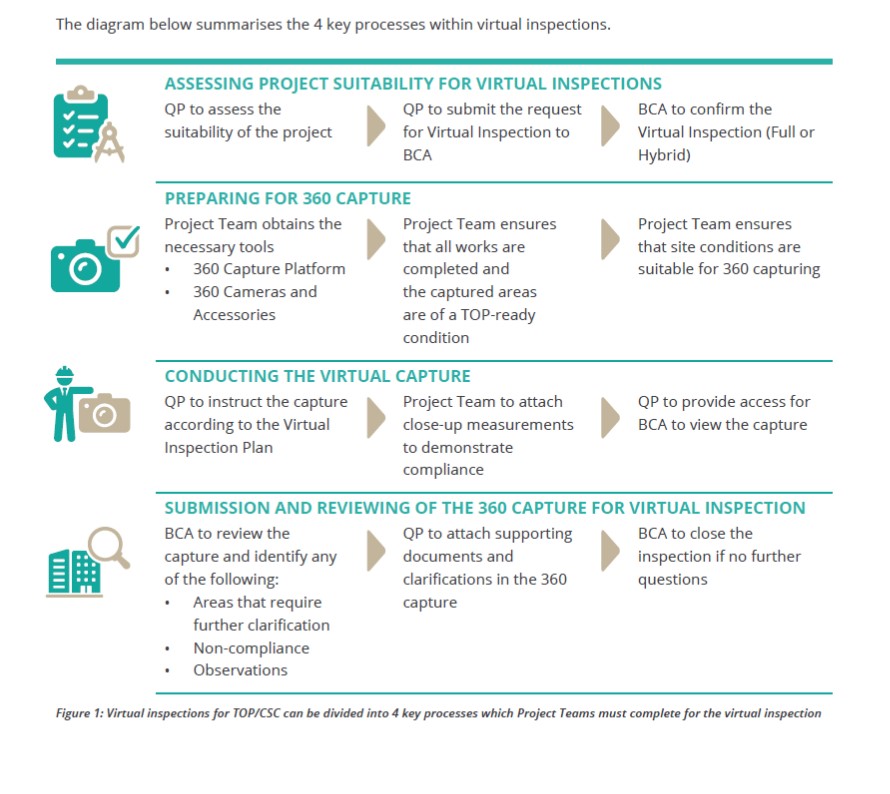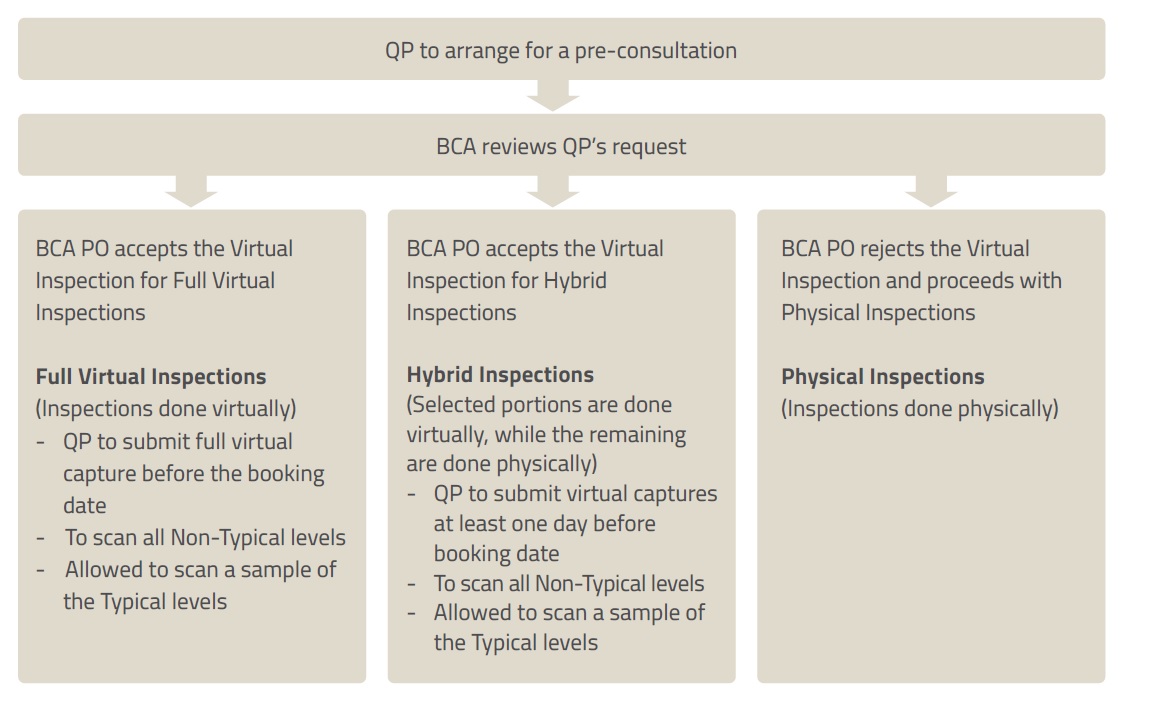What is Virtual Inspection for TOP/CSC?
Virtual inspection for TOP/CSC refers to the use of technologies to conduct inspections virtually prior to the issuance of TOP or CSC for a building or development project. This technology leverages 360-degree photos to create virtual representations of project sites which enables inspectors to conduct virtual inspections without the need to physically visit the project site.
The utilization of 360-degree capture technology can enable the industry to have additional means to conduct their checks more efficiently. This technology aligns with the broader trend of digital transformation within the construction and development sector, offering an alternative to traditional on-site inspections while maintaining the rigor and comprehensiveness required for regulatory compliance and quality assurance
Key benefits of Virtual Inspection
Comprehensive Visual Representation - 360-degree photos provide a holistic and immersive view of the project site, allowing inspectors to examine the entire environment from various angles and perspectives.
Remote Accessibility - Inspectors can access and review the virtual representation of the project site from any location reducing physical travelling time and enhancing inspection processes to be make them more efficient.,
Time and Cost Savings - By reducing the need for on-site visits, 360-degree capture technology contributes to time and cost savings associated with inspection processes.
Enhanced Collaboration - Stakeholders, including inspectors, project managers, and relevant authorities, can collaborate effectively by accessing and discussing the virtual representation of the project site.
Documentation and Analysis - The captured 360-degree images serve as valuable documentation of the project site and what was observed during the time of inspection.
Overview of workflow for virtual inspection for TOP/CSC

Assessment on the suitability for 360 capture
Selecting inspection locations for virtual inspections utilizing 360-degree capture technology, it is important to adhere to the following guidelines:
Typical Floors:
A minimum of 3 typical floors should be selected in each building for the virtual inspection. This translates to approximately 1 scan for every 10 floors. These typical floors should represent the standard layout and features of the building.
The selected floors within each building should be spread out to ensure a comprehensive representation of the entire building.
Non- typical Floors:
All other non-typical floors, such as common areas and external areas around the building, should be included in the virtual inspection whenever applicable.
Roof with maintenance access:
The virtual inspection should include scans of any roof with maintenance access in the building. Additionally, the scans should show the access control measures in place to segregate the maintenance area from the public spaces.
Guidelines for attachment to show compliance
To complement the 360 capture, photos of sample measurement should be given. Please refer to the guideline on what sample measurements are required for different typology using 360 capture.
Request for virtual inspection for TOP/CSC
